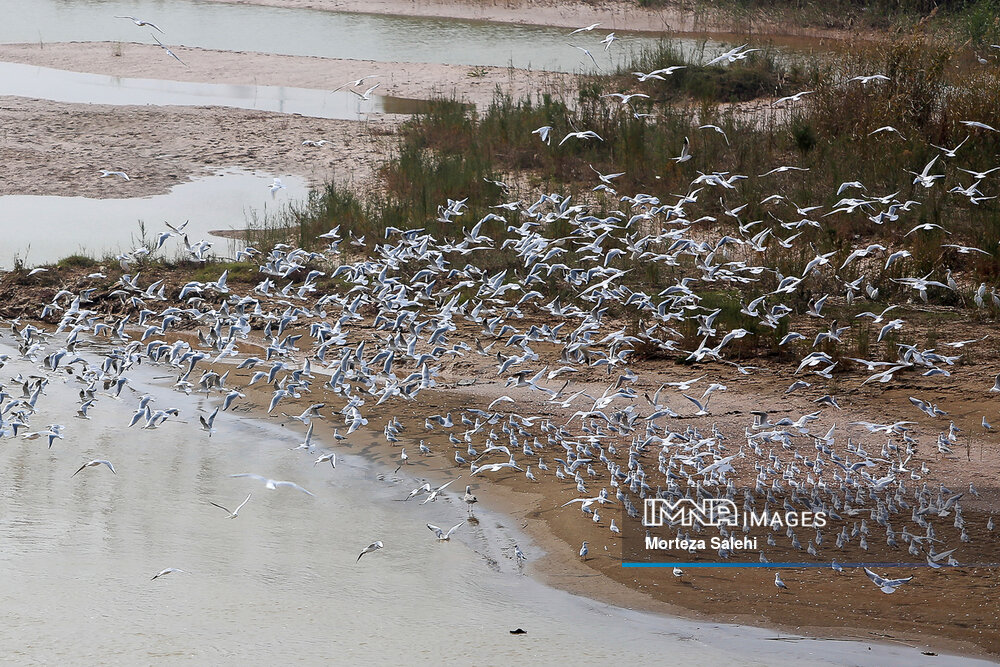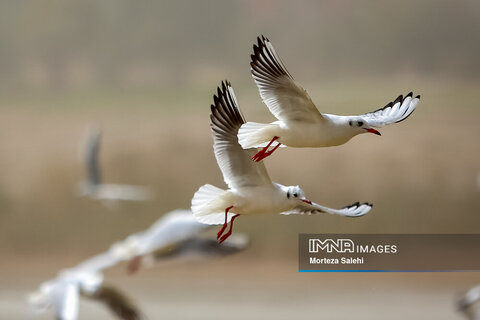Iran (IMNA) - The goal of World migrating Bird Day 2022 is to increase public awareness of the harm that light pollution does to migrating birds. Organizations, cities, and other important global stakeholders should make real promises and pledges in response to the campaign.
The Convention on Migratory Species is now developing best practice recommendations to address this growing issue and guarantee that worldwide action is made to help birds move safely.
Artificial light is rising, and it is known to harm several bird species. Light pollution is a major concern to migrating birds, causing them to become disoriented when flying at night, resulting in accidents with structures, interfering with their biological clocks, or interfering with their ability to make long-distance migrations.
Bright spots draw the attention of migratory birds. The lights draw them off course, causing them to spend more energy and land in unsafe locations, such as well-lit metropolitan areas that pose much greater risks than the darker, more natural areas where they would otherwise halt. The birds must now negotiate this unnatural forest to locate a suitable area to rest and replenish after landing in a world of glass and steel the morning after a lengthy voyage. They are fatigued and hungry.
Birds on the move are drawn to bright places. As a result of being attracted by the lights, they not only waste energy but also end up in urban regions that are far more dangerous than the darker, more natural locations where they would normally stop. After arriving in a world of glass and steel the morning after a lengthy flight, the birds must now navigate this unnatural jungle to locate a suitable location to rest and refuel. They are now weary and hungry. Crashing buildings result in the death of several birds. In an urban environment, the habitat quality is not always ideal for those who survive, making it more challenging for them to get the food they need.
Light pollution may be eliminiated by individuals in a number of ways. The best course of action is to switch off all unused evening lighting near residences and commercial buildings. Use motion detectors to restrict use of necessary lights, such as security illumination, and always utilize the least amount of power required for the work at hand. All lighting should be pointed downward, placed to illuminate the ground, and shielded to avoid beaming into the sky. Closing blinds or curtains will stop light from beaming into the night, which can also be an issue with indoor illumination.

Migratory birds in Iran
Songbirds travel at night to avoid predators, turbulence, and heat during the day. We are ignorant of the wonderful and vital voyagers soaring up to 10,000 feet above us from where we are.
The vast majority of core landbirds migrate at night. Cuckoos, flycatchers, warblers, vireos, thrushes, orioles, and sparrows are among them. The majority of these birds live in woodlands and other sheltered areas.
It is critical to understand when migrations occur because illuminated sky from artificial lights causes bird confusion and millions of bird deaths each year.
It is critical to understand when migrations occur because illuminated sky from artificial lights causes bird confusion and millions of bird deaths each year. The dwindling bird population is problematic for a variety of reasons, not the least of which is that some of the most adventurous travelers, such as the Hummingbirds, are keystone species that provide ecosystem services such as pollination and consumption of aphids and mosquitoes.
According to Reza Faraji, director of the Department of Environment's wildlife conservation and management office, 1,998,615 birds, including shorebirds and ducks, moved to Iran between January and February 2021.
He stated that data was gathered from 491 posts around the whole country.
Iran hosts rare species of migratory birds traveling from the north to the southern countries during this time due to dropped seasonal temperatures and plenty of food. The annual migratory birds census in Iran begins in the time between December 22–January 20 and ends between January 21–February 19).
The Dalmatian pelican, lesser white-fronted goose, red-breasted goose, common pochard, marbled duck, white-headed duck, Siberian crane, and great knot were among the 61,493 migratory birds on the IUCN Red List that were spotted across Iran.
Faraji noted that during the census period, Mazandaran, Golestan, and Gilan provinces hosted the largest population and Alborz, Yazd, and Hamedan provinces homed the lowest population of migratory waterfowl and shorebirds. He went on to say that the largest population of birds belongs to the group of geese, swans, and ducks, and the smallest population was the group of skuas, storks, egrets, and sandpipers.
Population estimates of wintering waterbirds in Iran indicated that migratory population of the group of pelicans shows the highest growth rate and the group of storks, ekras and kaffehnok came with the least rate of growth.


Your Comment